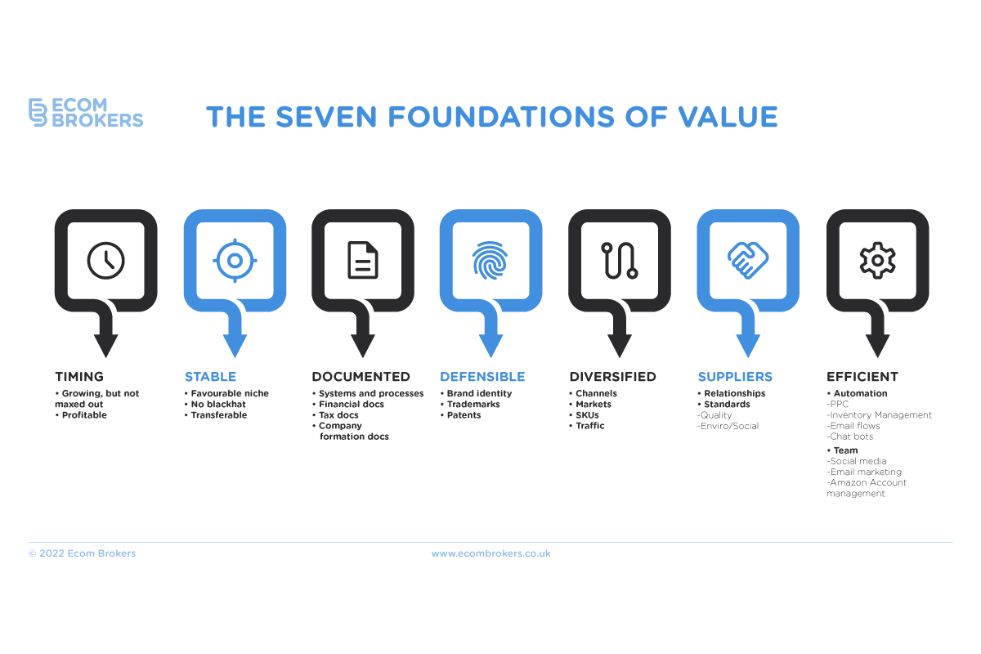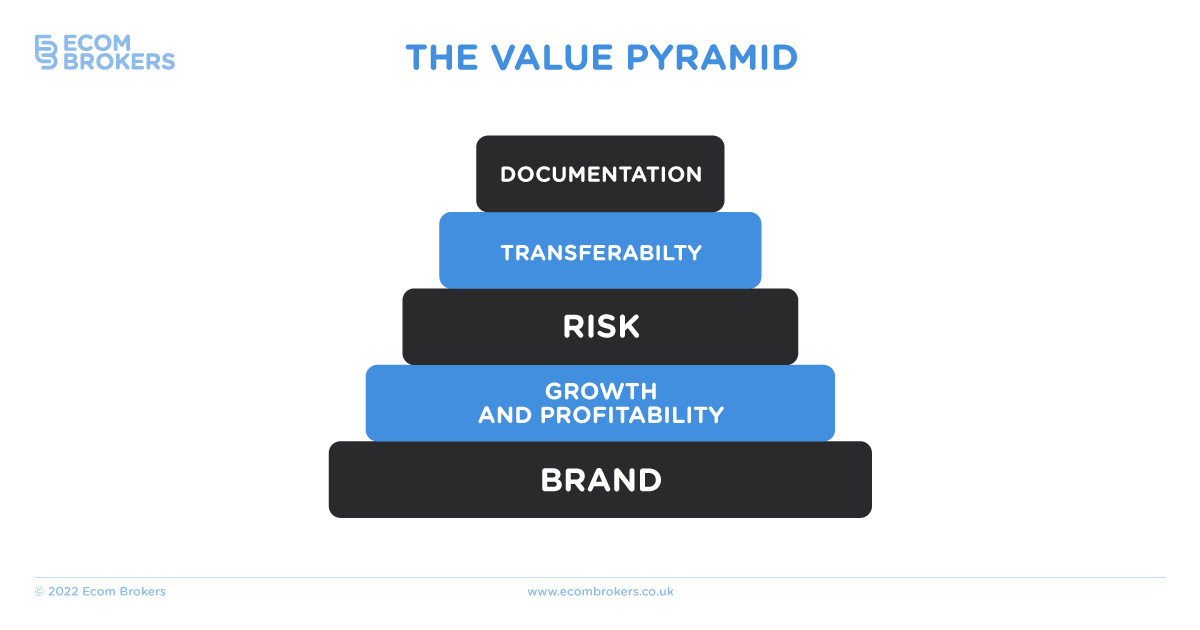
Online Business Deals: Different Structuring Options Explained
Have you launched a business, grown it, scaled it and nurtured it?
Excellent.
Now, perhaps, it’s time to start thinking about selling it.
Or maybe you’re looking to buy a new online business. Great!
Many entrepreneurs have been in the same position as you are in now. Many others find themselves in the exact same position. It’s thrilling, it’s exciting – it’s a little bit scary.
For many first-time sellers and buyers, it’s a major unknown.
The thing is that all online business deals are unique. There are considerations that are unique, there are circumstances that are unique. No two businesses are the same, and no two deals are the same.
This is why it’s so important that you get to the root of things and understand deal structure. By learning about this important aspect of selling or buying an online business, you’ll stand a better chance of getting the deal you want.
In this article, we’ll be taking an in-depth look at the different structuring options that are available to you.
Deal Structure: Things to Consider
Before we press ahead, this article isn’t about how to value your business. It’s not a guide on how to prepare your business for sale. There are plenty of other articles you can read on those subjects (and we highly recommend you do just that if you haven’t yet drafted an exit plan of any kind).
Instead, this article is written on the assumption that you’ve already priced-up your business and properly prepared it for sale … or, that you’ve already got your eye on a few online businesses to buy.
With that in mind, the next step is to choose the deal structure that’s right for you.
How do you do this?
Let’s take a look at the things you need to consider.
Risk
Launching a business is risky.
Selling a business is risky.
Everything business-related is risky.
Therefore, it’s logical to say that your first consideration when you structure a deal is risk.
Here’s a scenario for you: A business owner sells their business. But the buyer defaults on a payment.
The fact that this happened (and it does happen) means that the seller took a risk on that buyer.
On the flip side, let’s imagine a buyer who takes control of a business they just bought. Within minutes they realize this is not the business they were shown.
The fact that this happened means the buyer took a risk purchasing the business in the first place. What they expected didn’t materialize – and that’s where the risk is. You’re taking a gamble on something meeting your expectations.
We’re discussing this now because some risk can actually be removed from the equation.
How?
By nailing the right deal structure.
The right deal structure doesn’t eliminate all risk. But what it does do is it ensures that the risk is distributed between both parties (the buyer and the seller) more evenly.
It also helps both parties to trust each other more, and it can help to ensure that both parties walk away satisfied.
Let’s have a look at the types of risks you might face as a buyer:
Revenue
Revenue is hugely important when we’re talking about deal structure. You need to understand things like:
- Expenses
- Churn rates
- Unexpected spikes in revenue
When you look at the business you’re about to buy, do you think you’ll be making what you expect to make on a monthly basis?
Seasonality
Let’s say you’re looking at a business that’s performed super well recently.
That’s all well and good – but what if the previous months showed no signs of promise?
Don’t get seduced by a good quarter. Look closely at the annual results.
Concentration
Where does the business get most of its revenue, clients and traffic from? Does one source make up about 60% of the revenue?
Does one source make up 100% of the traffic?
You need reassurance that this business won’t lose its major sources of success.
Let’s now take a look at the risks that a seller faces when selling their business:
Payment
This is easily the biggest risk that a business owner takes when selling their business. What happens if a buyer defaults on their payment? Or decides they no longer want to pay you the full amount?
Vet all sellers carefully and don’t enter into a deal until you absolutely trust this person.
Revenue
Yes, revenue is a risk consideration for the seller, too. This is because if the business stops generating the kind of revenue that the buyer expected, they may default on a payment.
This is why you need to be upfront about your revenue sources before closing a deal.
Automation
An automated business is one that can thrive even when you’re not around. If your online business isn’t automated, it might start to flounder once you’ve sold it.
Don’t put yourself into a position whereby you can’t stage a 100% exit without your business failing. Automate your processes first so that your business can survive without you at the wheel.
The Things a Buyer and Seller Needs
One of the reasons selling a business can be so difficult is because two needs have to be taken into account:
- Buyers needs
- Sellers needs
If these needs aren’t met, or if they’re in conflict, it’ll be very hard to get a suitable deal over the line.
What does a buyer need?
Timing
Buyers don’t want deals to drag on forever. If they’ve got the available funds, and if everything is looking good, they’d rather get the deal over the line ASAP.
If, on the other hand, it’s the buyer who slows the process down, it might be a smarter idea to come up with a longer-term agreement that grants the seller more benefits. Such benefits might include – for example – an increase in the price
Price
Speaking of price …
Naturally, we speak for everyone when we say that money is key. A buyer is just like a seller in that they want the best price possible for themselves first and foremost.
As such, while a seller might negotiate up, a buyer’s first instinct is to always negotiate down.
Most buyers won’t have all the money needed to complete a deal up-front. That’s just the way of things. Instead, they might seek to delay payment or look for financing options that allow them to pay for a business over a few months or even years. This not only helps them out financially, but it also means they’re not handing over all their cash for a business that – as it turns out – isn’t what they expected it to be.
What’s more, even if a buyer does have all the cash needed to buy a business outright, they may still explore financing options so that they can put some money aside to invest in improving business operations.
Let’s now take a look at a few things a seller needs …
Timing
Yes, timing is important to the seller, too.
In other words, does a quick sale matter to the seller? Or would they be okay holding out for a better price?
Price
Price is obviously essential to sellers.
However, while we all want to get the best price possible that reflects our years of hard work launching and scaling our business, some sellers might be okay with accepting a lower price if it means they can get a deal over the line quicker.
Does The Seller Wish to Stay Involved In the Business?
At this point, the seller understands the business better than anyone else. They know it inside out and how everything (and everyone) works.
So the question is – does the seller still want to maintain an active role in the business? Or would they prefer to just move on completely and sever all ties at this point?
Can the business even survive without them?
Some buyers prefer the seller to remain in the company and will put together a structure that incentivises them to stay on.
Trust
Trust is essential if both parties are to get the deal that’s right for them. The seller needs to trust the buyer, and the buyer needs to trust the seller.
After all, the buyer is promising to pay the seller X amount of money, while the seller is promising the buyer that the business they’re purchasing is what they say it is. If there’s no mutual trust, the deal can fall apart.
Of course, trusting complete strangers isn’t easy. This is why it’s so important that both parties carry out their due diligence. This will build the levels of trust and confidence and put everyone’s minds at ease.
Both parties could also chuck in one or two benefits that can help to build a bit of a relationship between the buyer and seller.
Different Types of Deal Structuring Options
There are a couple of different ways you can structure a deal so that both the buyer and the seller are able to minimize their risk as much as possible. These deal structuring options also enable buyers and sellers to beef-up the security in their deals, as well as gain leverage.
In this section, we’ll be introducing you to the main types of deal structuring options so that you have a better idea of which one is right for you.
Earn-Out Structure
With one earn-out structure, the buyer pays a deposit upfront, before paying the rest of the price in a series of installments. Exactly when the installments will be due depends on the deal – they might be paid weekly, monthly or even yearly.
This type of deal structure works kind of like when you put down a house deposit, before paying your mortgage over a number of years.
Who does this type of deal benefit?
Buyers certainly get to reduce risk by using this option because it means they’re not getting rid of all their money in one lump sum. It also gives them a bit of leverage because they get a bit of time to assess how the business is performing.
More than that, the buyer will have extra cash at their disposal to invest in the company. When this happens, they might find ways to generate extra revenue, and can then settle the remaining installments with any profit they’ve already made from the business.
The seller, meanwhile, will be incentivised to make sure their business performs efficiently during the payment period.
When it comes to seller benefits, holdbacks certainly represent a leverage opportunity for sellers. Holdbacks are essentially holding money or – in the case of an online business – the domain. So, for example, the seller holds onto the domain until the buyer has settled all the outstanding payments.
The slight problem with holdbacks is that they can generate a bit of conflict between the buyer and the seller. Does the buyer trust that the seller will hand over the domain once all the payments have been settled?
A smart idea in such a scenario is to bring a third party into the proceedings who can mitigate during the holding process, effectively holding onto the domain for both the buyer and the seller until the payments are finalized. This third party could be a business broker, it could be a lawyer, or it could be an escrow service.
When should you go with an earn-out structure?
We’d say that if you’re selling or buying an online business that’s worth under $10,000,000, an earn-out structure might be the way to go. And if the business starts to generate more profit once the transition in ownership is underway, the buyer can pay off the rest of the installments with the profit, which ensures the process moves along much faster.
It’s also a good idea to opt for an earn-out if the seller wants to remain involved in some capacity with the business once it’s been sold. By staying involved with the business, the seller can be sure that they’ll get the rest of their money. That said, if a seller chooses to remain involved in some capacity, it’s important that they’re compensated for this.
Earn-Out Example
Let’s say a website sells for $400,000. In this scenario, the buyer pays $300,00 upfront, with the remaining $100,000 agreed as earn-out to be paid over across twelve monthly installments. By the end of the year, the entire sum should be fully paid up.
If, on the other hand, the business doesn’t hit specific earning targets, it sometimes happens that the payments are delayed and continue into next year. That said, it’s essential that the buyer and seller decide whether or not late payments will accrue interest.
To summarize this section, earn-outs are worth pursuing if a business is dependent so much on the seller that it’s going to be very hard for a new owner to come along and replicate their success immediately.
They’re also great for if a buyer and seller are willing to work on the business together and scale it, and if the seller is happy to work in a consultancy role of some sort.
On the other hand, should the business flop once it’s been sold, there’s every chance the seller won’t get their final payments. Not just that, but an earn-out can mean that a seller stays involved with their business for longer than they’d planned.
How To Structure an Earn-Out
There are different ways to structure an earn-out and we’ll be exploring them in this section.
Performance Milestones
One of the best ways to structure this type of deal is by setting performance milestones. Underpinning this type of structure are regular payments that are paid once a milestone has been met.
For example, achieving X amount of profit can be a milestone. Once the business has achieved X amount of profit, another set of payments is processed.
Milestones can be as big or as small as you want. Their purpose is to give the seller a bit more peace of mind that the payments will be made, as well as offer more security to the buyer. If a performance milestone is met, the business is clearly performing well, and the buyer can be happy.
It’s worth mentioning that buyers tend to go for profit-based milestones – but sellers usually go for revenue-based milestones. Is there much of a difference?
There is, and the reason a buyer might prefer profit-based milestones is because these take business expenses into considerations. On the flip side, revenue-based milestones don’t take business expenses into consideration. As such, a buyer prefers profit-based ones because, if they’re investing in scaling the business, it’s likely that there’ll be times when they don’t hit the milestone and can thus delay the payment.
For instance, if a buyer agrees to make a payment each time the business reaches $6,000 monthly profit but they spend $3,000 on the business once a month, the milestone might not be reached. As a result, the buyer gets to skip a payment for that month.
Rollover Equity
Rollover equity is a type of transaction whereby the seller agrees to sell most of their company for $$$ – but keeps a percentage of equity. This allows them to liquidate almost all their assets without rescinding total ownership.
Seller-retained equity is beneficial to the seller because they get to enjoy a number of benefits provided the business continues to do well.
Does rollover equity really work, though? And how does it benefit the buyer? If at all?
The seller typically receives their equity in monthly dividends, which are paid along with the agreed price. However, even after the price has been paid in full, the seller will continue to receive monthly dividends.
They won’t receive these for nothing. Rather, the seller will continue to place an active role, even if this may be a reduced consortial role of sorts.
The buyer, on the other hand, gets to take advantage of the seller’s experience and expertise, and could even use them as a consultant. Not just that, but because the seller is still playing a somewhat active role at the business, they will hardly want it to fail. Instead, they’ll work hard to make sure it’s successful.
If you opt for this type of deal structure, it’s important to define your agreement carefully. This means clearly defining exactly what is expected of the seller (what’s their exact role?) so that no misunderstandings arise.
Moreover, if a seller decides they want to leave the business 100% later down the line, they will need to sell their equity to the current owner of the business. This itself is a tricky process that needs to be negotiated with great care.
As such, we don’t recommend this type of deal structure if you know in your mind as a seller that you want to make a clean break.
Perpetuity-based
This type of deal structure ensures that the seller continues to reap a number of benefits from the business they’re just sold. They don’t receive equity, but they might – for example – receive a fee in exchange for providing some sort of service.
What sort of service?
Let’s imagine the seller was performing an essential task at the company that nobody else is currently qualified to do. The seller had specific key skills that made them indispensable (and certainly had to be replaced). The buyer themselves definitely doesn’t have the necessary skills and so invites the seller to continue performing this task for a fee.
How long the seller remains at the business is entirely up to the seller and the buyer. They could stay on for a few months during the transition period, or they could stay on indefinitely. If, on the other hand, the seller was planning to make a quick exit and move onto another venture, a perpetuity-based deal structure isn’t the best way to go.
Balloon Loans
If you’ve got a bigger business that’s expected to sell for a few million, you might want to seriously consider a balloon loan.
This is (typically) a short period loan (no longer than 120 days and often just 30 days). However, the payments made over this short period of time don’t generally cover the full amount.
What happens at the end of the loan period? The rest is paid-up. Because this is generally a large amount, it’s referred to as a balloon payment – hence the name balloon loan.
A buyer might want to explore this option if they’ve not got the cash to hand immediately and therefore want to minimize their monthly payments. Not just that, but they can go for a balloon loan if they’d prefer to reinvest their cash in the business in order to scale it.
What’s an example of a balloon payment?
Let’s imagine an online business sells for $1,000,000. It was making $40k a month and the buyer decided to pay $800k straight away. The rest – $200k – is to be paid back over the next four months at a rate of $6k a month on the understanding that the business yields $30k per month in profit.
When the fourth month is up, they will need to pay up the outstanding amount. It doesn’t matter what the profit is, they will need to pay.
Investor Partnerships
An investor partnership requires people who know how to run a business but who don’t have the cash needed to buy one. As such, they team up with investors who have the money.
An investor typically fronts up at least 40% of the cash. Sometimes, they’ll front up the whole amount. If they can’t provide all the money, the operator covers the rest. An operator who doesn’t have much capital can use some sort of seller financing if necessary. They will then be responsible for running the business, performing tasks, hiring employees and so on.
As usual, the investor will take a backseat. What’s key to this type of deal is that the investor and the operator come up with a way to share the equity.
An operator could theoretically turn to a bank for a loan. However, banks are a way of green lighting a loan for the purchase of an online business because they can’t seize any valuable assets as such. For this reason, skilled operators who are lacking in cash are increasingly turning to investors.
Tips for Sellers
For sellers who want a quick exit from their business so that they can move on to new projects, an earn-out structure is one type of deal structure that should be avoided. This is because it usually requires you to continue working on the business in some form.
If you’re a seller who opts for an earn-out deal, it’s important to charge interest over the period. This gives buyers who would otherwise be hesitant about paying for a business the chance to go ahead and make a deal. It also means you might earn more than your business is worth.
If, on the other hand, you’re not sure about the buyer and perhaps don’t trust them, it’s probably a good idea to avoid an earn-out structure. Go with your instinct. If the business doesn’t succeed and runs out of cash, they won’t be able to pay you the outstanding amount.
When should you definitely go with an earn-out structure?
If you’ve got a website that’s priced at $500,000+ (and especially if it’s selling for over $1,000,000), it’s always better to go with an earn-out structure. This is because it will be nearly impossible for a buyer to secure a loan in order to fund their purchase.
Just make sure you carry out your due diligence on the buyer. Learn about them, learn to trust them and get yourself into a position whereby you know they can successfully take over your business and keep turning a profit month-on-month.
If you instead opt for a milestone deal structure, it’s a smart idea to tie the payments to revenue as a seller (as opposed to profit).
Tips for Buyers
Instead of using all your money to buy an online business, it’s always wise to leave some aside for investment purposes. This will allow you to make improvements as you go along and boost revenue and profit.
If the business you’re planning on buying requires a strong buyer-seller relationship, we recommend an earn-out structure. This allows for a period of adjustment during which the seller is able to stay on at the business, thereby letting you benefit from their skills and experience. In a word, they can help to steady the ship.
Moreover, an earn-out structure motivates the seller to ensure the business doesn’t flounder during your first few months. They have to make sure it continues to succeed so that you’re able to complete the payments.
Conversely, if you wish to get the transaction over with as soon as possible but don’t have all the cash just yet, you could try to negotiate with a seller. In this instance, you’ll pay most of the price in one lump sum. Sellers who want quick cash and who also want to move on as soon as possible may be happy with this type of deal.
Final Thoughts
Whenever you buy or sell a business, it’s extremely important that you take the time to work out which deal structure is right for you. Even if you feel sure, it’s still worth getting advice from a broker or tax advisor who can clarify things further. After all, it’s only when you’ve got the “perfect” deal that you can truly move forward and feel good about things.
Whatever you do, do your research and carry out due diligence. This is an exciting time whether you’re buying or selling, but it’s only exciting if you know exactly what the score is.
Ready to sell your business for the best possible price? Start by clicking the link below! No obligation, no hard sell. Just solid, professional advice.









